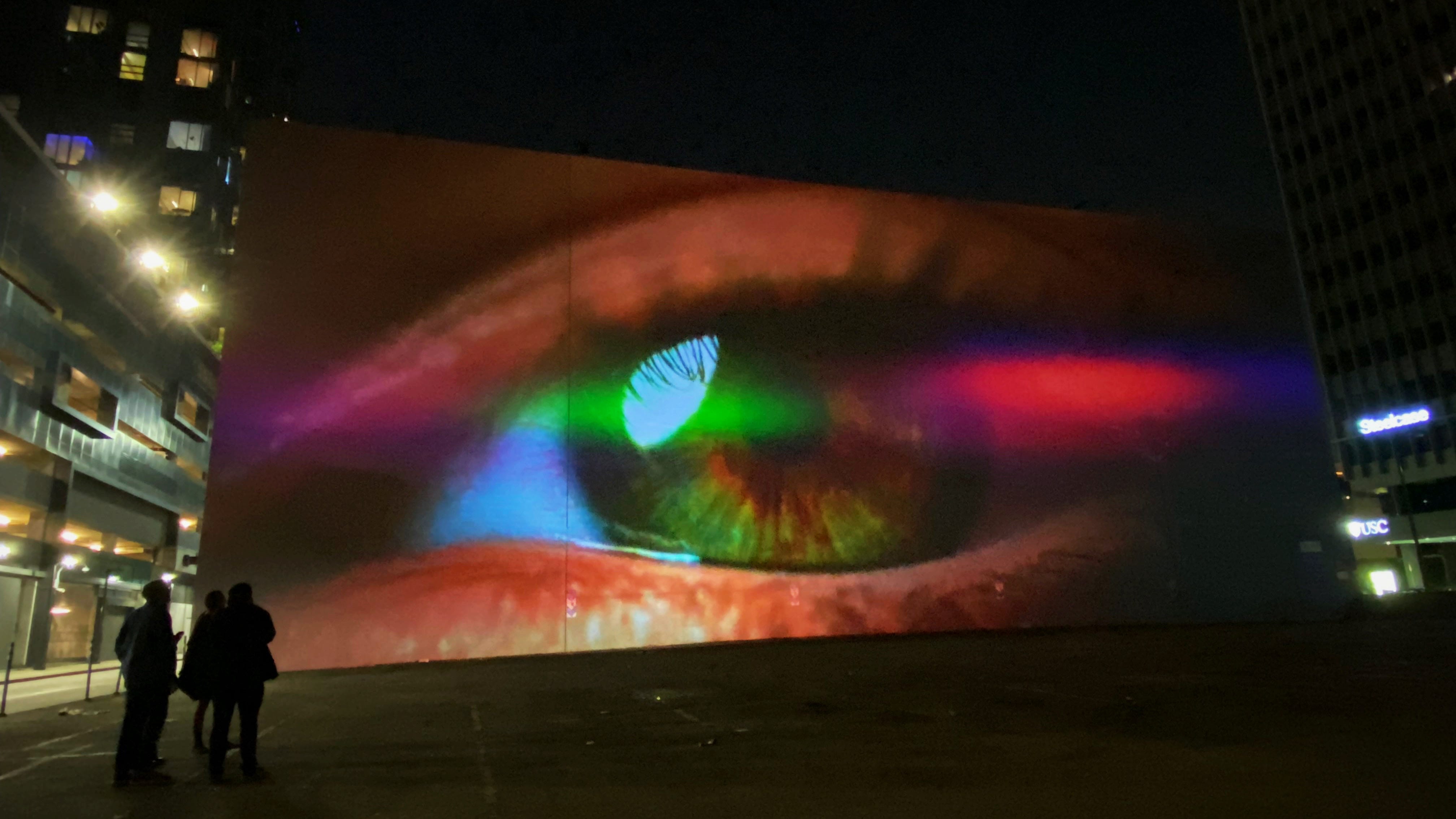LUMINEX 2.0: Projected Realities (Capsule Review)


[Original publication: No Proscenium, 9/20/22]
LUMINEX 2.0: Projected Realities was the second iteration of NOW Art’s one-night-only art exhibition combining video projection, sound design, augmented reality (AR), and live performance. Projected onto building exteriors in the streets of Downtown Los Angeles, the digital artworks were viewable on a grand scale. The entire event was inclusive: free, open to the public (no need for online reservations), concentrated within a five-block radius (for those with mobility needs), outdoors (for those mitigating Covid risks), and included a livestream option (for immunocompromised folks and non-LA residents).
Get Laura Hess’s stories in your inbox
Join Medium for free to get updates from this writer.
SubscribeSubscribe
Specializing in public art, NOW Art is an LA-based art consultancy with a focus on using art as a catalyst for social change. In 2021, LUMINEX: Dialogues of Light included the work of six artists, including tech-forward visionaries such as Refik Anadol and Nancy Baker Cahill. An estimated 15,000 viewers attended in person and nearly 400 people joined the livestream.
For LUMINEX 2.0, NOW Art doubled its artist roster, expanded the programming, and included additional partnerships with local DTLA businesses. The event encountered a few hiccups: Hoverlay, an AR app, consistently failed to load and was non-functional for the duration of the evening, and live performances struggled with integration, both to their spatial surroundings and to the digital artworks.
This year, Sarah Rara’s Screen Lovers was a standout not only on its own, but also as a key reminder of context for site-specific artwork. The video was a loop of human eyes, blinking and staring. Bordered by city skyscrapers, a single, massive eye gazed back at viewers. The projection was accompanied by a transcript, read by a robotic female voice (developed as a collaboration between Rara and an AI). The spoken text was layered with dystopian humor about the prevalence of screens and our interaction with them. With commentary about identity, intimacy, and our surveillance state, the monologue was a surreal, harmonious companion to the projected video and especially resonant in its urban setting.
Screen Lovers was both familiar and surprising; it felt personal and universal. It transformed a hulking wall and an empty parking lot into a gorgeous, heartbreaking, and comical reflection point in the heart of DTLA. It transcended its location while also deepening its messaging through its location. Rara’s work is a best-in-class example of why LUMINEX and other public art initiatives are such an important part of our cultural landscape.